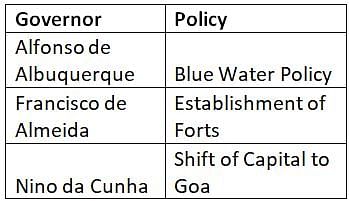Spectrum Test: The Advent of Europeans & Consolidation of British Power in India- 1 - UPSC MCQ
15 Questions MCQ Test History for UPSC CSE - Spectrum Test: The Advent of Europeans & Consolidation of British Power in India- 1
Consider the following pairs:
1. Bombay given to East India Company - 1668
2. English factory established at Surat - 1616
3. Golden Farman issued by Sultan of Golconda - 1632
4. Foundation of Fort St. George in Madras - 1639
How many pairs given above are correctly matched?
Consider the following statements regarding the Carnatic Wars:
1. The Battle of St. Thome during the First Carnatic War was fought between the French forces and the forces of Anwar-ud-din, the Nawab of Carnatic.
2. During the Second Carnatic War, Robert Clive captured Arcot with a force of only 210 men in 1751.
3. The Treaty of Peace of Paris (1763) ended the Third Carnatic War and restored the French factories in India.
Which of the statements given above is/are correct?
| 1 Crore+ students have signed up on EduRev. Have you? Download the App |
Who was the real founder of Portuguese power in the East?
Consider the following statements:
Statement-I:
The Portuguese established military posts and settlements on the east coast at San Thome (in Chennai) and Nagapattinam (in Tamil Nadu).
Statement-II:
The Dutch founded their first factory in Masulipatnam (in Andhra) in 1605.
Which one of the following is correct in respect of the above statements?
Consider the following statements:
1. Francisco De Almeida was appointed by the King of Portugal to consolidate the Portuguese position in India and destroy Muslim trade.
2. Nuno da Cunha shifted the headquarters of the Portuguese government in India from Cochin to Goa.
3. The Portuguese administration in India was known for its tolerant religious policies towards Muslims.
Which of the statements given above is/are correct?
Consider the following pairs:
1. Francisco de Almeida - Established a factory at Calicut
2. Vasco Da Gama - Led by a Gujarati pilot named Abdul Majid
3. Francisco de Almeida - Opposed establishing a territorial empire
4. Afonso de Albuquerque - Took control of Goa
How many pairs given above are correctly matched?
Who is known as the 'Navigator' and significantly promoted exploration, leading to increased prosperity and demand for oriental luxury goods in Europe?
Consider the following statements:
Statement-I:
The English secured permission to set up Agra, Ahmedabad, and Broach factories.
Statement-II:
The French East India Company was reorganized as the 'Perpetual Company of the Indies' in 1720.
Which one of the following is correct in respect of the above statements?
Consider the following statements:
1. The Sultan of Golconda issued the 'Golden Farman' in 1632, allowing the English to trade freely in the ports of Golconda on payment of 500 pagodas a year.
2. The English factory at Surat was established in 1613 under Thomas Aldworth.
3. Sir Thomas Roe secured permission to set up factories at Agra, Ahmedabad, and Broach in 1615.
Which of the statements given above is/are correct?
Consider the following statements:
Statement-I:
Prince Henry of Portugal, nicknamed the 'Navigator,' significantly promoted exploration.
Statement-II:
The Treaty of Tordesillas in 1494 divided the non-Christian world between Portugal and Spain along an imaginary line in the Atlantic.
Which one of the following is correct in respect of the above statements?
Consider the following pairs:

How many of the above pairs are correctly matched?
Consider the following statements:
- Nino da Cunha shifted the Portuguese capital in India from Cochin to Goa in 1530 to strengthen Portuguese control over the Indian Ocean trade.
- The Battle of Hooghly in 1632 was a significant event that demonstrated the Portuguese's declining influence in the Bengal region.
- The Treaty of Bassein (1534) between the Portuguese and Bahadur Shah of Gujarat was instrumental in the Portuguese acquisition of several key territories along the western coast of India.
How many of the statements given above are correct?
Consider the following statements:
- The defeat of the Dutch at the Battle of Bedara (Bedaara) in 1759 effectively ended their ambitions in India and left the English East India Company as the dominant European power in the region.
- The 'Golden Farman' issued by the Sultan of Golconda in 1632 granted the English East India Company significant trading privileges, including the right to trade freely in the ports of Golconda.
- The Battle of Plassey in 1757 was primarily between the English East India Company and the Dutch East India Company over control of Bengal.
How many of the statements given above are correct?
Consider the following statements:
- The Anglo-Dutch Treaty of 1824 required the Dutch to withdraw from their possessions in India, marking the end of their commercial presence in the region.
- The system of Cartazes was introduced by the British to regulate maritime trade in the Indian Ocean.
- The Battle of Wandiwash in 1760 was a decisive victory for the British over the French, significantly reducing French territorial claims in India.
How many of the statements given above are correct?
|
111 videos|495 docs|173 tests
|

















